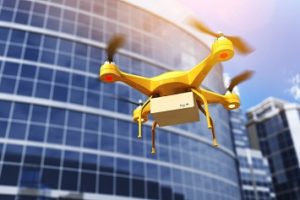Unmanned aerial vehicles (UAVs), also called drones, are proving themselves useful for more than just hobby photographers. But, as we saw earlier in this series, they also carry risks. As governments and businesses adopt UAV technology for everything from aerial reconnaissance to construction project management, it’s important to make sure that those risks are addressed.
A new review of drone technology, compiled by the National Institute for Occupational Safety and Health (NIOSH) and published in the 2017 issue of the Journal of Industrial Medicine, provides a place to begin looking at risk mitigation for UAV applications.
Prevention Through Design
For many of the hazards of UAVs, there are safety measures that could be easily built in. All of these must be balanced against the airworthiness requirements that apply to UAVs.
- To prevent collisions with people or objects, UAVs can be equipped with collision avoidance systems. UAV-mounted collision avoidance systems that operate in three dimensions are still in development.
- To minimize collision damage, the structure of the UAV itself could be made safer. UAV design could incorporate measures of stiffness and pliability that would reduce the force of impacts. In addition, reducing the weight of the UAV can reduce the hazard to workers below.
Operator Training
Under Federal Aviation Administration (FAA) rules found at 14 CFR Part 107, UAV pilots must hold a Remote Pilot Certificate. Remote pilots must be at least 16 years old and must be able to read, write, and speak English, and they must be physically capable of operating a UAV. They must pass a Transportation Security Administration (TSA) background check and a test covering basic aeronautical knowledge and UAV operating rules.
Pilots must be able to identify the potential hazards of operating a UAV at the worksite and should be authorized to address any hazards they see.
Safe Work Practices
In addition to pilot qualifications, safe work practices could include requirements similar to those for work at elevation or work involving elevated loads.
- Drones should be inspected before use to ensure that they are in proper working order.
- Load limits should be strictly observed.
- Flight plans should ensure that workers on the ground are not at risk.
Documentation
Maintain documentation of risks and the ways that they will be addressed—for example, you may need to put a written work rule in place specifying that workers will not be present directly underneath where the UAV will be operating and that all workers on-site will wear head protection. Other documentation would include flight and maintenance records and records of any problems or near misses that occur.
Liability Insurance
There are liability policies available to cover UAVs, and any employer that is going to use UAVs should carry coverage. If you can’t get a reasonable rate for coverage, that should tell you something about the level of risk you’re incurring.

